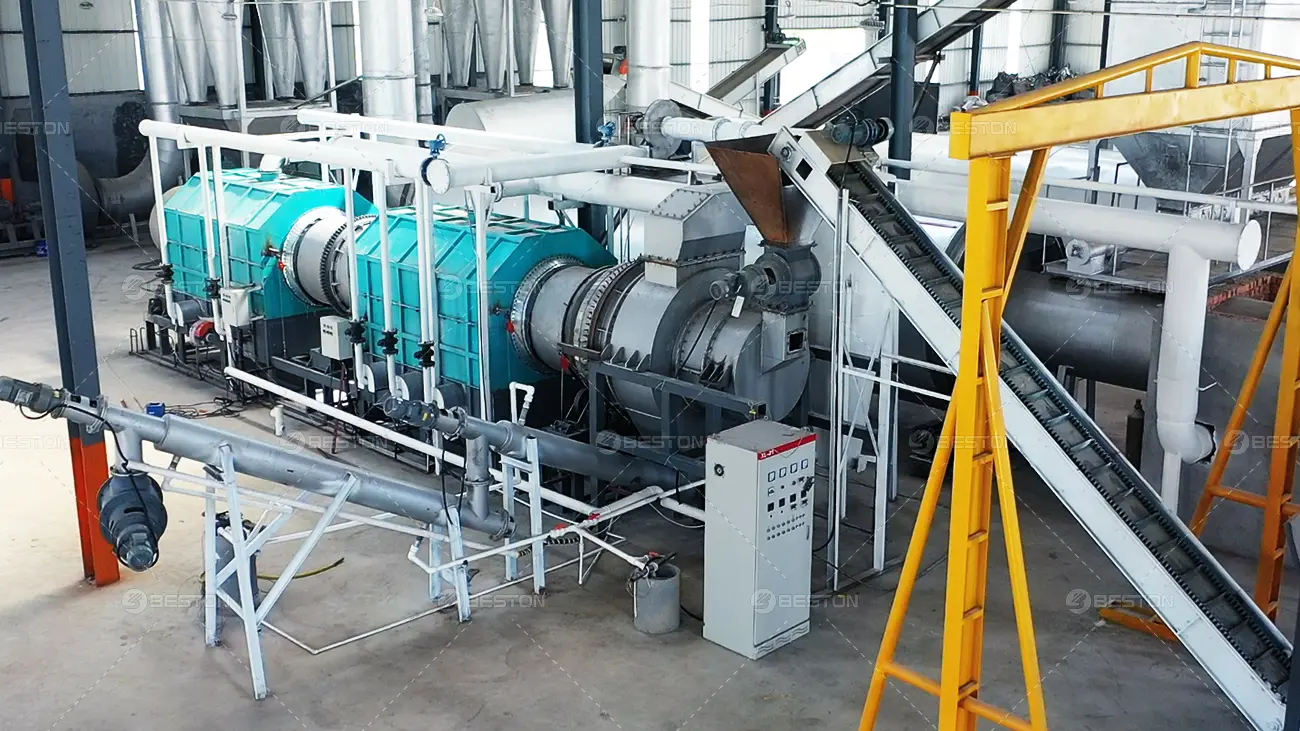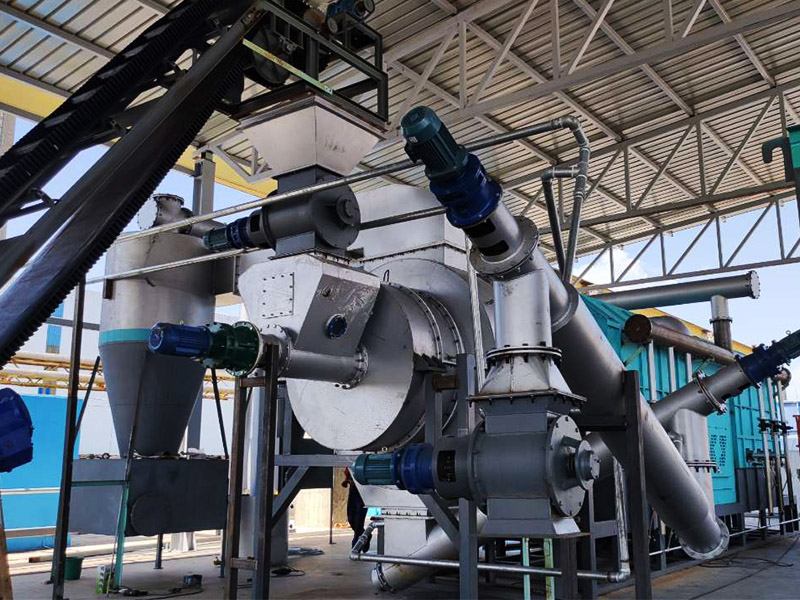Wood charcoal production is an intricate process that involves converting organic materials into carbon-rich fuel through the process of pyrolysis. This technique has been used for centuries, and it remains crucial in both industrial and small-scale applications. To maximize the efficiency and quality of wood charcoal, it is essential to optimize various factors in the production process. This not only enhances the yield but also ensures that the final product meets specific performance criteria for different uses, such as heating, grilling, or industrial applications.

Efficient Use of Charcoal Machine
The efficiency of the charcoal machine is another factor that directly impacts the production process. A well-designed charcoal machine allows for optimal heat distribution, efficient fuel use, and faster processing times. Modern charcoal machines are equipped with advanced features such as automated temperature control, gas recovery systems, and improved pyrolysis chambers that enable more efficient charcoal production.
To optimize the charcoal machine’s performance, regular maintenance and calibration are essential. Over time, wear and tear can reduce the machine’s efficiency, leading to inconsistent results and higher operational costs. Ensuring that the machine is cleaned regularly and that components are in good working condition is vital for maintaining a high level of productivity.
Furthermore, the feedstock size and shape can also affect the efficiency of the charcoal machine. It is recommended to reduce the size of the wood feedstock to ensure consistent heating and faster pyrolysis. Chopping or chipping the wood into smaller pieces before processing can improve heat distribution and speed up the production process.
Moisture Content and Pre-Drying Techniques
Moisture content plays a pivotal role in the efficiency of wood charcoal making machine. Wood with high moisture content requires more heat to evaporate the water before it can undergo the pyrolysis process. This increases the energy requirements and prolongs the production time. Therefore, it is important to reduce the moisture content of the wood before it enters the pyrolysis chamber.
Pre-drying the wood can be achieved through natural air drying or through artificial drying methods such as solar drying or kiln drying. Natural air drying takes time but is cost-effective, whereas kiln drying accelerates the process but requires additional energy. By optimizing drying techniques and ensuring that the wood is sufficiently dry, producers can reduce fuel consumption during pyrolysis and improve overall efficiency.

Selecting the Right Wood for Charcoal Production
The type of wood used in how to make wood charcoal significantly affects the quality and yield of the final product. Hardwood species such as oak, hickory, and maple are known for producing high-density charcoal with longer burn times and higher energy content. Softwoods, on the other hand, tend to yield lighter charcoal with a shorter burn time. When optimizing wood charcoal production, choosing the right wood is crucial for achieving the desired properties in the final charcoal.
Wood with lower moisture content is generally preferable. Freshly cut wood tends to have a high moisture level, which requires more energy to dry out during the pyrolysis process. Using dry or seasoned wood minimizes energy consumption and speeds up the pyrolysis process, ultimately enhancing efficiency.
Control of Pyrolysis Temperature and Time
The pyrolysis temperature and duration in carbonization furnace are critical parameters that influence the chemical composition of the resulting charcoal. Pyrolysis typically occurs in the temperature range of 400°C to 600°C, with variations depending on the type of wood and desired charcoal properties. The temperature needs to be carefully controlled to ensure complete decomposition of organic material without burning the charcoal.
Increasing the temperature can accelerate the process, but excessive heat may result in the loss of volatile compounds and a decrease in charcoal yield. Conversely, a lower temperature will slow the process but may yield higher-quality charcoal with fewer impurities. Maintaining an optimal temperature range ensures that the wood undergoes complete carbonization without excessive loss of volatile materials.
The duration of the pyrolysis process also affects the quality of charcoal. Prolonged exposure to heat can result in a higher yield of charcoal, but if the process goes on for too long, the charcoal may become brittle and prone to crumbling. Therefore, balancing temperature with time is key to maximizing the quality and quantity of charcoal produced.
Efficient Gas and Heat Recovery
One of the key innovations in optimizing wood charcoal production is the recovery and utilization of gases and heat generated during pyrolysis. A significant portion of energy is lost as volatile gases, which are often released into the atmosphere. By incorporating a gas recovery system into the charcoal machine, these gases can be captured and used as fuel for heating the pyrolysis chamber or for other applications.
Additionally, the heat produced during pyrolysis can be captured and reused to preheat incoming feedstock. This not only conserves energy but also reduces overall fuel consumption, improving the efficiency of the entire production system. Advanced charcoal machines are equipped with heat exchangers that allow for the recycling of thermal energy, further optimizing the process.
Airflow and Ventilation Control
Proper airflow management during the pyrolysis process is crucial for maintaining a consistent temperature and ensuring complete combustion. Inadequate ventilation can lead to incomplete pyrolysis, producing lower-quality charcoal with higher levels of impurities. Conversely, excessive airflow can cause overheating and lead to the loss of volatile compounds.
A well-designed charcoal machine allows for precise control over airflow and ventilation, ensuring that the pyrolysis chamber operates at the optimal conditions for carbonization. By maintaining stable airflow, the production process becomes more predictable, leading to higher yields and better-quality charcoal.
Monitoring and Automation
The implementation of automated systems to monitor and control various aspects of the charcoal production process has proven to be a game-changer. Advanced sensors can track parameters such as temperature, moisture content, and gas emissions in real-time, providing operators with valuable data that can be used to adjust the process for optimal results.
Automated systems can also help minimize human error, ensuring that the charcoal-making process remains consistent. These systems can adjust heat levels, control airflow, and even schedule maintenance, streamlining the entire production process and improving overall efficiency.
Maximizing Charcoal Yield
To maximize charcoal yield, it is crucial to minimize the loss of volatile components during pyrolysis. Optimizing factors like temperature, feedstock size, and moisture content helps ensure that the wood undergoes complete carbonization, resulting in higher charcoal production. Additionally, efficient gas and heat recovery systems further enhance the overall yield by recycling valuable energy.
By integrating these optimization strategies, charcoal producers can achieve a higher quality of charcoal, reduce production time, and minimize operational costs, all of which contribute to a more sustainable and efficient production process.